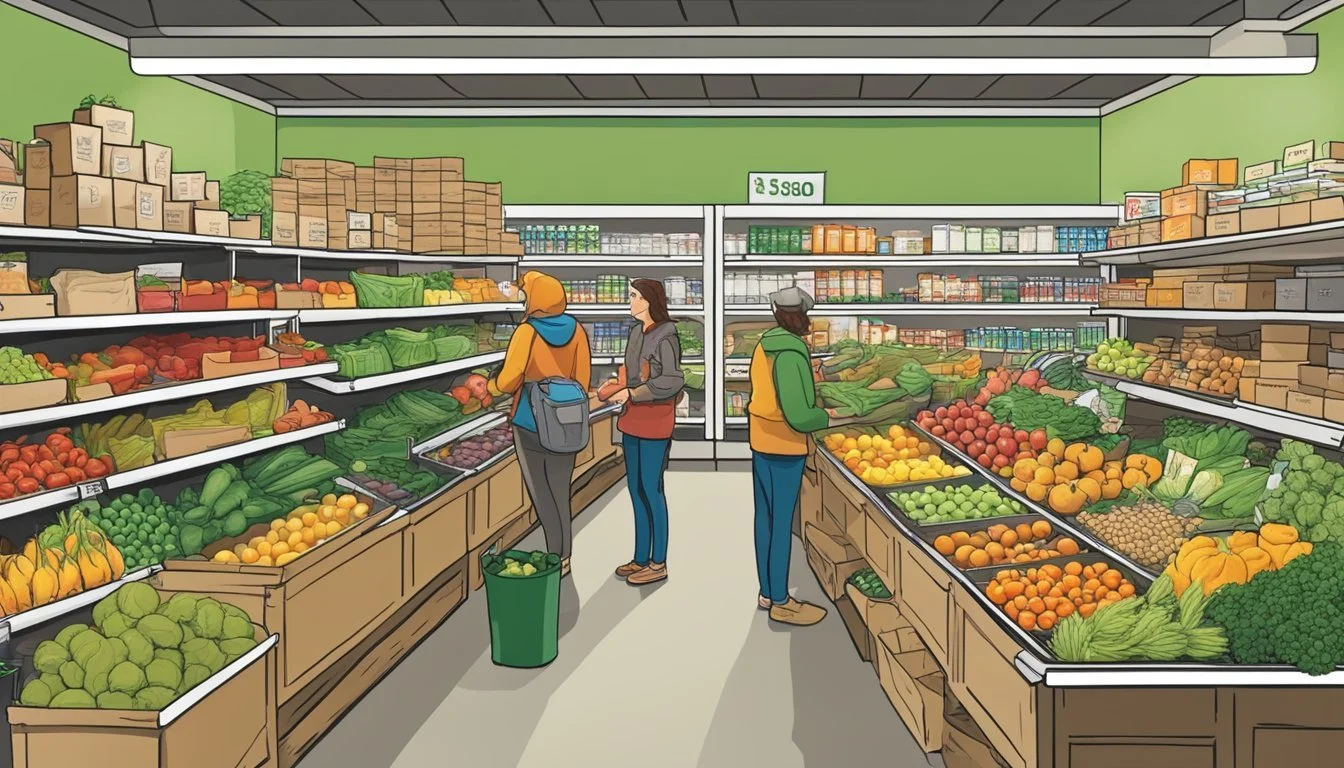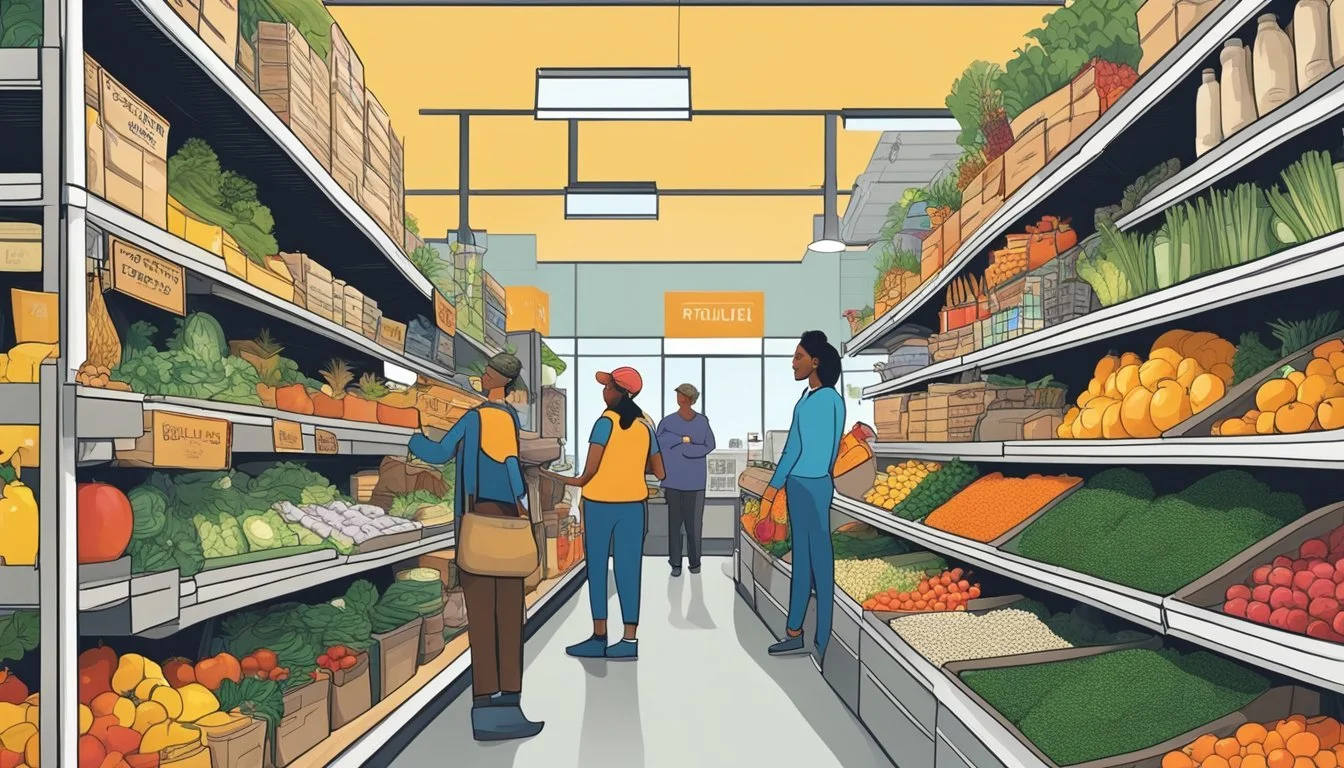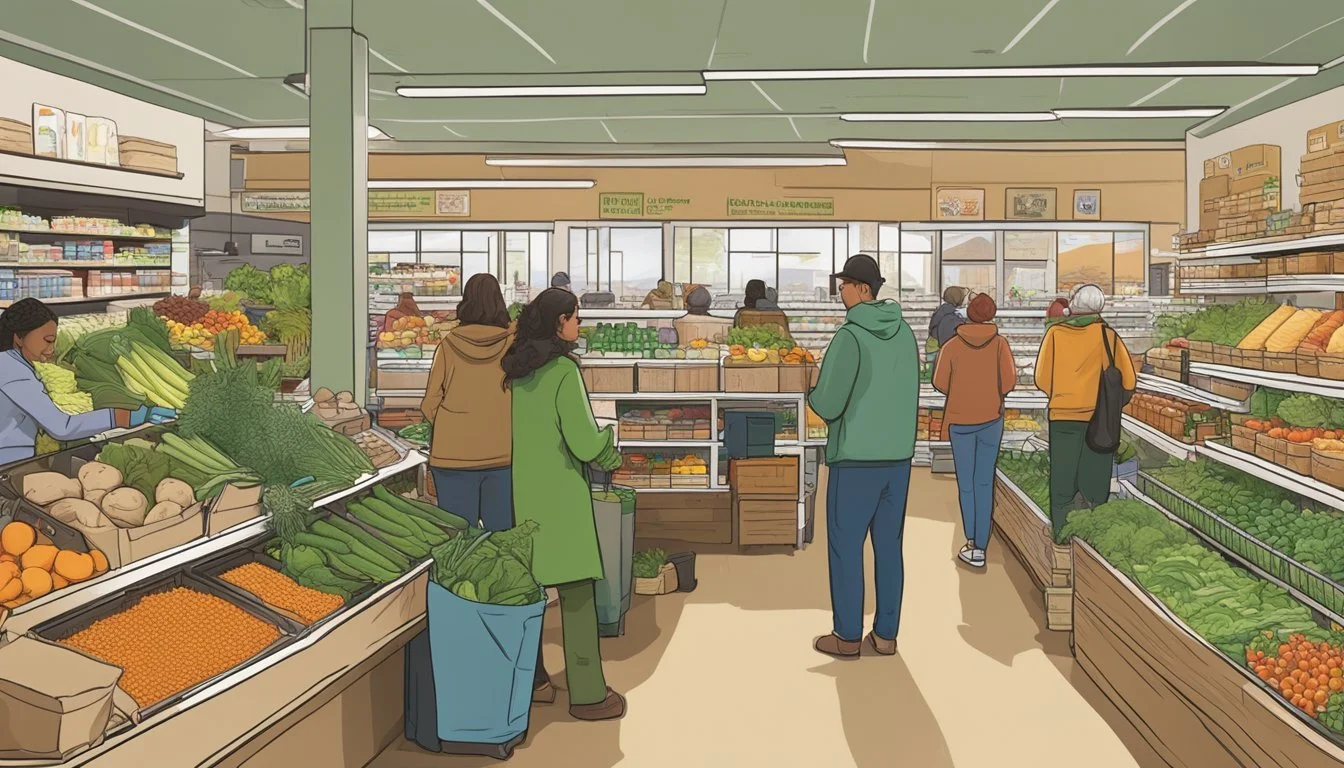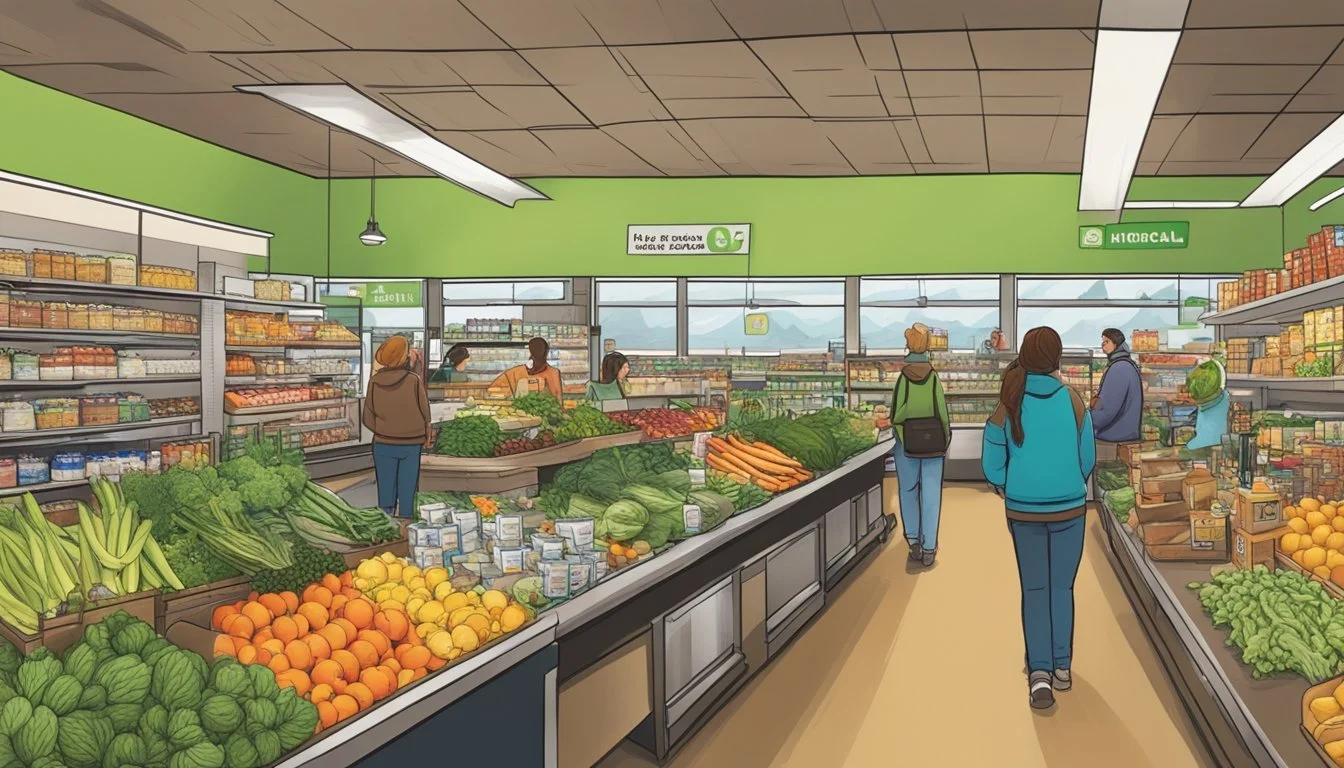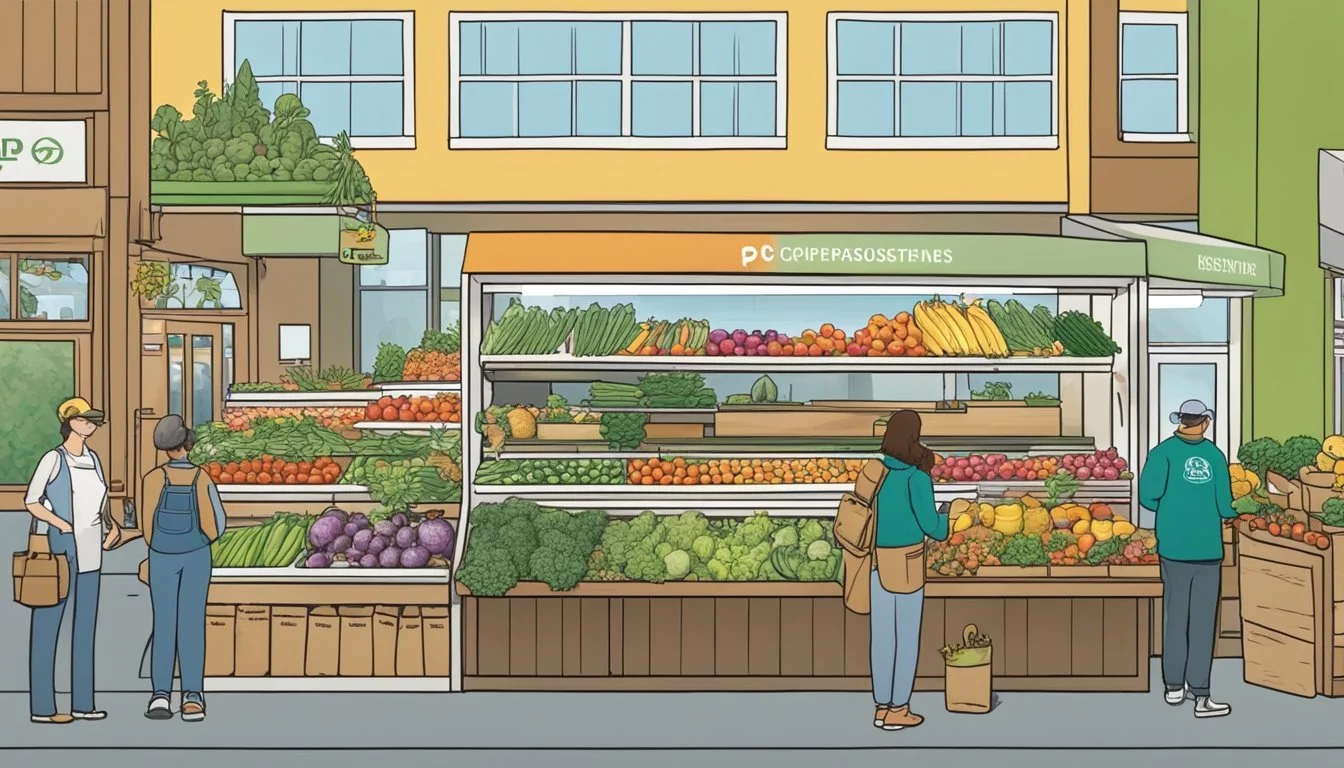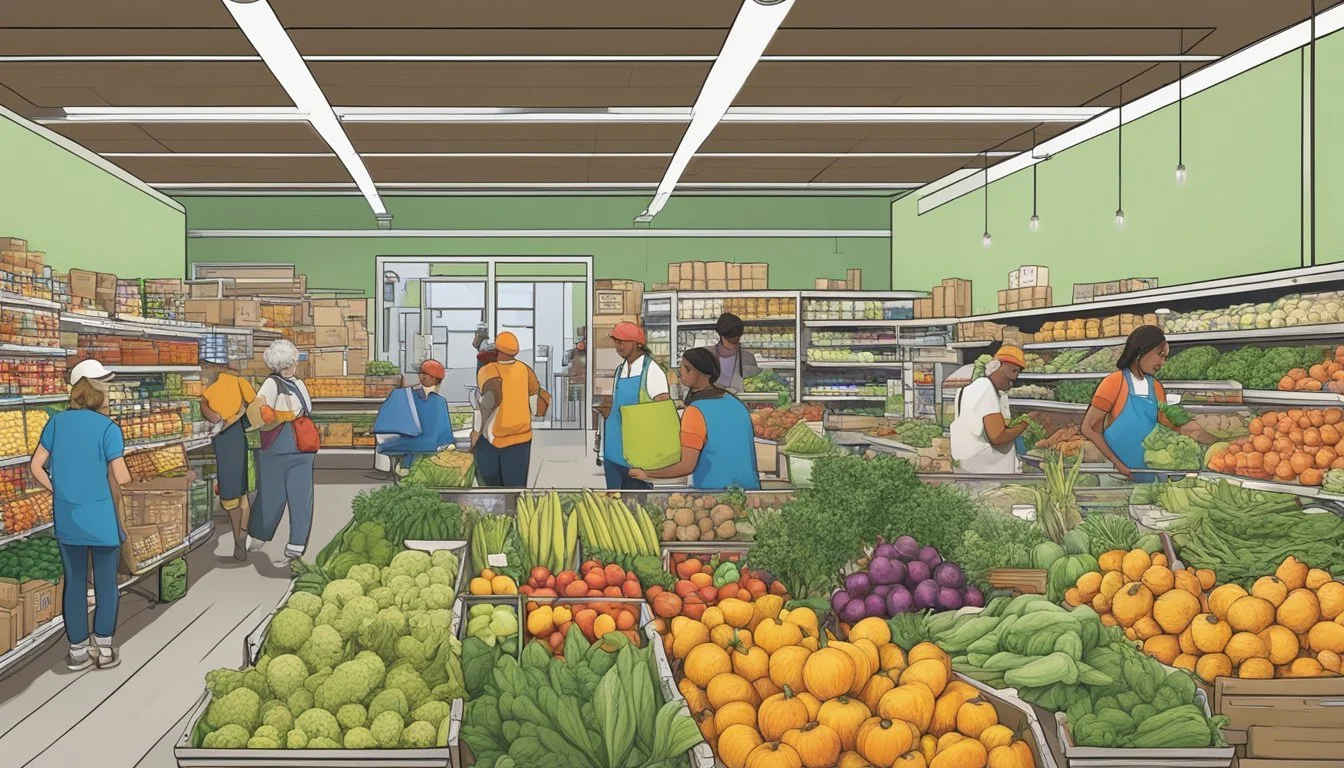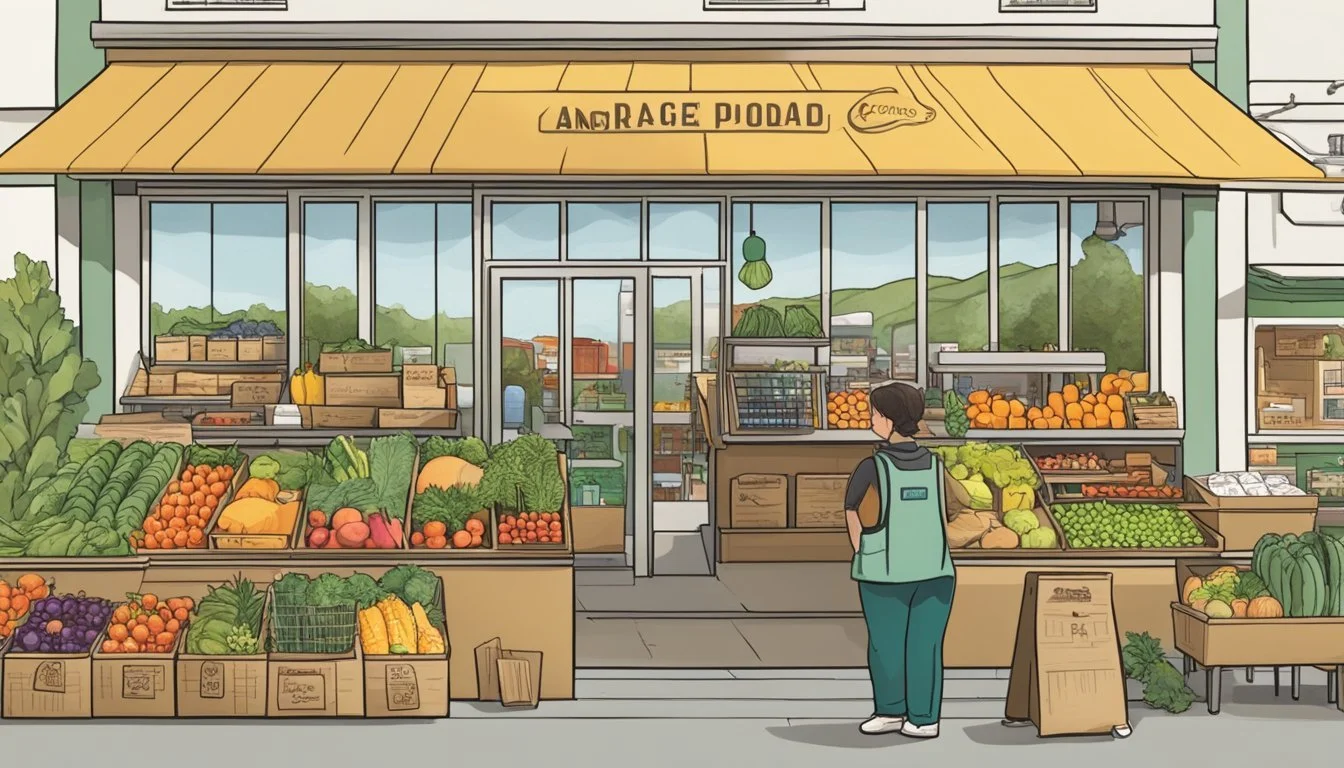Guide to Food Co-Ops in Anchorage, AK
Your Essential Shopping Resource
Anchorage, Alaska, a city known for its breathtaking landscapes and vibrant local culture, also boasts an impressive network of food co-operatives. These food co-ops are more than just places to purchase groceries; they are hubs of community interaction and support systems for local Alaskan farmers. The concept of a food co-op is deeply rooted in a collective ethos, where members often share ownership and participate in the governance of the establishment. This model not only fosters a strong sense of community but also encourages the circulation of locally sourced and often organic produce within the area, supporting sustainability and healthier lifestyle choices.
The ACDC (Anchorage Community Development Corporation) is actively involved with several food cooperatives, creating a substantial positive impact on the local food system by securing nutritious, Alaskan-grown food for residents. Among these, the Fairbanks Community Cooperative Market stands out as a noteworthy mention. Established in 2013, it is the largest wholesale buyer of AK grown food, significantly contributing to the state's economy and providing employment opportunities for locals.
Further enhancing the cooperative landscape of Anchorage, initiatives such as the Mat-Su Farm Co-Op work to connect Alaskan farmers directly with consumers in the Mat-Su Valley, striving to make locally grown food more accessible. By leveraging these food co-ops, residents of Anchorage have the unique opportunity to engage with their community, understand the provenance of their food, and contribute to the thriving Alaskan agricultural sector.
History and Philosophy of Food Co-Ops
Food cooperatives reflect a rich history of communal effort and are guided by principles that prioritize community welfare and sustainability.
Origins of Cooperatives
The concept of cooperatives can be traced back to early human societies where sharing resources was pivotal for survival. The formal structure of cooperatives emerged as people relocated from rural areas to cities during the late 18th century. In this period, community members pooled resources to create collective benefits in response to the hardships of urban life.
Core Principles
Food cooperatives are founded on core principles that emphasize collective ownership and democratic governance. Their philosophy encompasses:
Voluntary and Open Membership: Welcoming all individuals willing to accept the terms of participation.
Democratic Member Control: One member, one vote policy, ensuring equal decision-making rights.
Member Economic Participation: Members contribute equitably and control capital democratically.
Autonomy and Independence: Co-ops are autonomous organizations controlled by their members.
Education, Training, and Information: Co-ops provide education to members to contribute effectively to their development.
Cooperation among Cooperatives: Working together strengthens the cooperative movement.
Concern for Community: Co-ops work for sustainable development of their communities.
These principles are integral to food cooperatives’ operations, fostering sustainable practices and promoting the welfare of their community members. By adhering to these values, food co-ops not only provide a source of quality food but also strengthen local economies and encourage social connections.
Benefits of Food Co-Ops
Food cooperatives in Anchorage provide significant benefits ranging from bolstering regional agriculture to fostering environmental sustainability and reinforcing community ties.
Supporting Local Farmers
Food co-ops are integral in sustaining local farmers by ensuring there's a consistent market for their products. For instance, the Fairbanks Community Cooperative Market, which opened in 2013, has grown to become the largest wholesale buyer of Alaska-grown food. A focus on locally grown food means that farmers in the Anchorage area have a stable outlet for their produce, fostering a robust local economy and securing farming as a viable livelihood.
Environmental Impact
The operation of food co-ops also comes with a positive environmental impact. By prioritizing the sale of locally grown food, these co-ops significantly reduce the carbon footprint associated with long-distance transportation of goods. These cooperatives also tend to adopt sustainable practices that limit waste and encourage recycling and composting, thus minimizing their overall ecological footprint.
Community Building
Finally, food co-ops excel in community building. They are more than just shopping spaces; they are community hubs where members can connect and engage in food justice initiatives. Community-focused programs like Food for Thought Alaska aim to tackle hunger and food waste while promoting mutual aid and narrative-sharing amongst local residents—an embodiment of the cooperative spirit.
Starting a Food Co-Op in Anchorage
When starting a food co-op in Anchorage, one needs to address the initial considerations of local demand and community needs, organize the co-op effectively, and ensure proper legal and financial planning.
Initial Considerations
In Anchorage, the potential food co-op founder should begin with a clear assessment of community interest and market demand. They must research the local food market to determine if there is a niche for a cooperative that might focus on Alaska grown food, like the Fairbanks Community Cooperative Market which has become a significant buyer of such produce in the state.
Organizing the Cooperative
The core group needs to draft a mission statement and business plan, wherein the role of former staff or directors of cooperatively-owned businesses can be crucial. As suggested by resources such as the Food Co-op Initiative, they should:
Create a steering committee
Develop bylaws
Recruit members
Membership involvement is vital for such initiatives in U.S. cities like Anchorage, where the emphasis on local support for organizing cooperatives can determine their success.
Legal and Financial Planning
Forming a food co-op in the U.S. involves registering the business, which in the case of a co-op is typically a 501(c)(3). The cooperative must adhere to state and federal laws, including those specific to Alaska. Financial planning, another critical aspect, should include:
Budget Preparation:
Startup Costs: Estimation of initial investment needed
Ongoing Expenses: Regular operating costs
Funding Sources:
Member equity
Loans
Grants (where eligible)
The cooperative should also consider tax-deductible donations, highlighted by the Food Co-op Initiative, for their potential to provide additional financial support to the venture.
Membership and Governance
Food cooperatives in Anchorage offer community-driven alternatives to conventional grocery stores, inviting members to take part in their mission and decision-making processes. Each co-op has unique guidelines for membership, benefits, and governance structures, which collectively foster a robust local food economy.
Becoming a Member
Individuals interested in joining a food cooperative typically need to apply and purchase a share. This initial investment demonstrates a commitment to the values and success of the cooperative. The process varies by cooperative, but it is usually designed to be accessible to all members of the community.
Membership Benefits
Members of a food cooperative enjoy multiple benefits:
Discounts on purchases, reflecting the collective buying power of the cooperative.
Participation in special events, educational programs, and community-building activities.
A vote in the cooperative's governance, including electing the board of directors and making decisions on important matters.
Governance Structure
The governance structure of a food cooperative is designed to be democratic and inclusive. It typically includes:
A Board of Directors, elected from and by the members, who oversee the co-op’s strategic direction.
Committees and working groups that focus on specific areas like finance, marketing, or community outreach.
Annual General Meetings (AGM), where members review the cooperative's performance and vote on key issues.
Products and Suppliers
Food co-ops in Anchorage have a focus on providing a range of products that are sourced locally, ensuring freshness and supporting the Alaskan economy. They serve as a nexus between consumers and an array of local producers, offering a diverse selection of locally grown food.
Sourcing Local Produce
Food cooperatives in Anchorage prioritize sourcing a variety of local produce to offer consumers fresh options throughout the year. These co-ops work with Alaskan farmers who grow a range of items, from root vegetables to leafy greens. Due to the seasonal nature of farming in Alaska, the selection of fresh produce may vary. Co-ops often communicate the availability of products like:
Vegetables: Potatoes, carrots, cabbages, and others depending on the season.
Fruits: Berries, such as blueberries and raspberries, when in season.
Eggs: Fresh eggs from local poultry farms.
Partnership with Local Producers
Co-ops in Anchorage establish partnerships with local producers to ensure a steady supply of fresh, locally sourced foods. These relationships bolster the local economy and provide co-op members with high-quality products. The producers typically adhere to the seven cooperative principles, fostering a community-focussed approach to food distribution. They may include:
Local Farmers: They provide a range of fresh, locally grown produce.
Fishers: Supplying a selection of seafood from Alaska's waters.
Artisanal Food Crafters: Offering cheeses, bread, and other hand-crafted items.
By maintaining these partnerships, co-ops offer a unique shopping experience that highlights the best of what Alaska has to offer in terms of food products, while also contributing to the sustainability of local agricultural and production practices.
Operational Strategies
The success of food co-operatives in Anchorage hinges on efficient management of inventory and a commitment to sustainability. These operational strategies ensure food co-ops meet consumer needs while supporting Alaska's environment.
Managing Inventory
Inventory management in food co-operatives involves a detailed tracking system to balance supply with demand. Anchorage's food co-ops often implement inventory software that allows for real-time updates, which is critical for maintaining the freshness of Alaska-grown produce. They typically focus on stocking a variety of local foods, aligning with community preferences and seasonal availability. The adoption of a First-In, First-Out (FIFO) method prevents waste and ensures a rotation of fresh goods.
Energy Usage and Sustainability
Sustainability is at the core of energy usage strategies for Anchorage food co-ops. Emphasis is placed on minimizing carbon footprint through various means:
Renewable Energy Sources: Food co-ops invest in renewable energy sources, primarily solar panels, to power their operations, thus reducing reliance on non-sustainable electricity.
Energy-Efficient Equipment: They utilize advanced refrigeration and lighting systems designed to conserve energy. LED lighting and ENERGY STAR-rated appliances are standard choices.
Waste Reduction Programs: Sustainable practices extend to minimizing waste, with comprehensive recycling programs and composting organic waste.
By integrating these practices, food co-ops in Anchorage not only contribute to a healthier environment but also resonate with the values of their eco-conscious consumers.
Marketing and Outreach
Effective marketing and outreach are crucial for the success and sustainability of food co-ops in Anchorage, AK. They focus on in-store efforts to promote their products, foster community engagement, and harness various media channels to reach customers.
In-Store Marketing
Food co-ops in Anchorage utilize in-store marketing strategies to attract and inform customers. The Fairbanks Community Cooperative Market, as an example, features Alaska-grown food prominently within the store, utilizing signage that highlights local produce and its farmers. This method not only educates customers about local food options but also underscores the freshness and quality of their products.
Community Engagement
Community engagement plays a vital role in Anchorage's food co-ops. Many host events and partner with local organizations, as seen with the Sitka Food Co-op, which operates as a grocery buying service and actively builds relationships within the community. Additionally, the Food Bank of Alaska collaborates with corporations to tailor volunteer programs, integrating the co-op into the framework of Anchorage's societal and economic ecosystem.
Newsletters and Social Media
Food co-ops keep their community informed and engaged through newsletters and social media. A regular newsletter can act as a tool for updating members on the latest co-op news and local food-related events. On social media platforms, entities like the hypothetical "Fresh From Alaska Anchorage food co-op" might use Facebook groups to galvanize support and participation from the local Anchorage community, addressing consumer demands for transparency on social and environmental issues.
Financial Considerations
When exploring the financial landscape of food co-ops in Anchorage, Alaska, understanding the nuances of funding operations and managing community-based pricing structures is imperative for sustainability and growth.
Funding and Financial Management
Budgeting: A thorough budget is essential for tracking and managing the financial health of a food co-op. It accounts for operating costs, employee wages, and investments in infrastructure. For instance, food co-ops often require significant upfront capital to purchase inventory and fund storage facilities. Access to funds through community investments, business loans, or grants could play a pivotal role in establishing and maintaining operations.
The Fairbanks Community Cooperative Market demonstrates success by employing 26 people and being a substantial buyer of Alaska-grown food, suggesting sound financial planning and management practices.
Pricing and Affordability
Competitive Pricing: Food co-ops must balance affordability for members with the need to stay financially viable. Pricing strategies should reflect the cost of local sourcing, storage, and distribution, while also appealing to consumers who are accustomed to traditional retail prices.
Accessibility: Co-ops in Anchorage have a unique challenge in making locally-grown food affordable. Organizations like the Food Bank of Alaska indicate a community need for accessible food pricing, a consideration that co-ops must incorporate into their pricing models.
In summary, financial considerations for food co-ops in Anchorage revolve around careful budgeting, securing adequate funding, and establishing a pricing model that supports both the co-op's economic sustainability and the community's access to affordable food.
The Role of Volunteers
Volunteers are integral to the operations of food co-ops in Anchorage, AK. They serve not only as the workforce that helps manage daily needs but also as champions of community well-being.
Engagement and Impact
Volunteers engage in a range of activities:
Crate Washing: Ensuring cleanliness and hygiene standards.
Grocery Donations: Assisting in the collection and management of food contributions.
Their contribution extends beyond mere participation; it fosters a community spirit and helps maintain the co-op's sustainability.
Skill Building and Support
In food co-ops, volunteers often acquire valuable skills in customer service, inventory management, and operations. Moreover, their support:
Allows co-ops to operate effectively, particularly for those with limited staff.
Helps ensure a continuous flow of quality, Alaska-grown food to the community.
Outreach and Advocacy
Volunteers are advocates for the co-op’s mission to provide access to local food, and they play a key role in outreach efforts. Their involvement is crucial in:
Raising Awareness: Educating the public on the benefits of locally-sourced produce.
Advocacy Work: Campaigning for a hunger-free state and encouraging community involvement.
The commitment of volunteers at Anchorage food co-ops underscores the collective effort required to sustain and advance such community-centred initiatives.
Anchorage Food Co-Op Directory
In Anchorage, the community has come together to create cooperative markets that prioritize local products and foster a healthy ecosystem of food distribution. This directory outlines key food co-ops within the area, supporting a local-first approach.
Fairbanks Community Cooperative Market This co-op, established in 2013, shines as a beacon for locally grown produce. With 26 employees, it prides itself on being the largest wholesale buyer of Alaskan-grown food, aiming to bolster the state's agriculture.
Mat-Su Farm Co-Op A newcomer since 2015, the Mat-Su Farm Co-Op dedicates itself to linking the bounties of Alaskan farms to the tables of the Mat-Su Valley. They spotlight the importance of high-quality, local produce by collaborating with various small farms across Alaska.
Co-op Market Grocery & Deli Distinguished as Alaska's first retail food co-op, Co-op Market Grocery & Deli emerged from an idea in the early 2000s to become a value-driven, locally owned store in Interior Alaska. Its mission intertwines community wellness, happiness, and economic prosperity, emphasizing the community’s role in its foundation.
Prospective Anchorage Food Co-Op A movement by local Anchorage residents to establish another food co-op is currently underway. Intent on reinforcing the local health food system, they signify a growing interest in community-oriented food solutions.
For updates and detailed information, interested individuals are encouraged to reach out to these organizations directly or visit their respective web presences. The commitment of these co-ops to sustain local agriculture makes them pillars in the Alaskan food scene.
Future of Food Co-Ops in Anchorage
Anchorage's food co-ops are poised for change, integrating sustainable practices and innovative operational models to meet the evolving demands of the community and the environment.
Trends and Predictions
In Anchorage, the food co-op movement is gaining momentum. This trend reflects a community-driven focus on sustainability and local sourcing. Farmers in the region are becoming integral partners, providing Alaska-grown food that bolsters food security and reduces environmental impact. It is anticipated that co-ops will continue to grow as the largest wholesale buyers of AK grown food, supporting both local agriculture and sustainable practices.
Innovation in the Co-Op Model
Co-ops in Anchorage are beginning to embrace regenerative agriculture, which includes practices that restore soil health and reduce carbon footprints. This innovative approach to farming exceeds traditional sustainability, suggesting a future where food co-ops contribute significantly to slowing climate change. The co-op model is adapting, not only to serve the community with local, organically-grown produce but also to incorporate eco-friendly operations, such as reducing waste and utilizing environmentally conscious packaging. With these innovations, Anchorage's food co-ops are becoming a blueprint for environmentally responsible grocery shopping.

